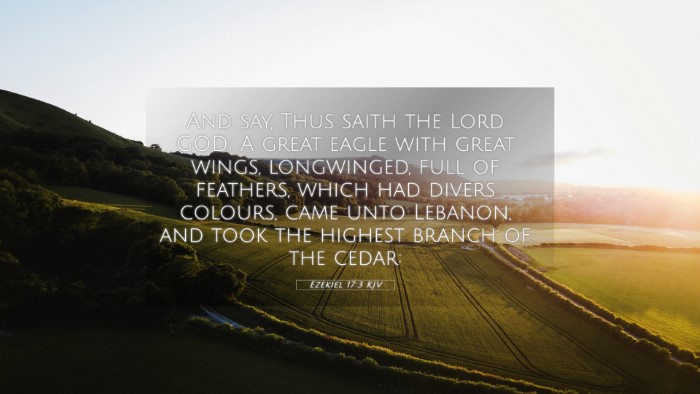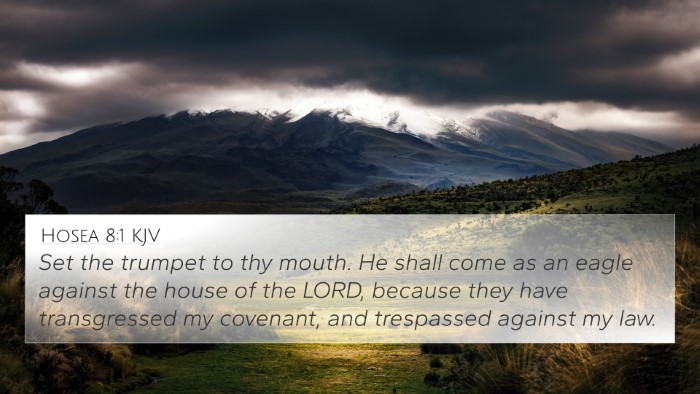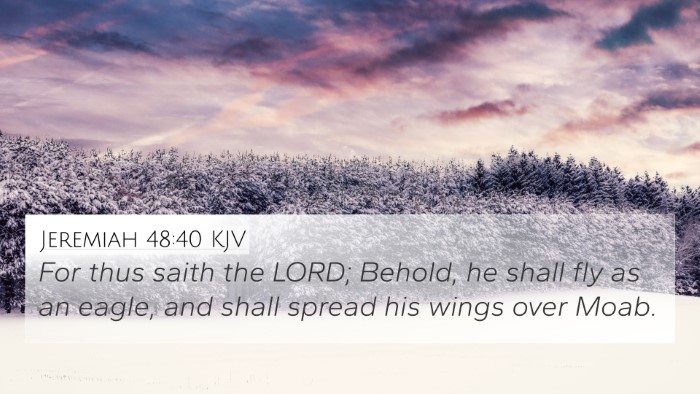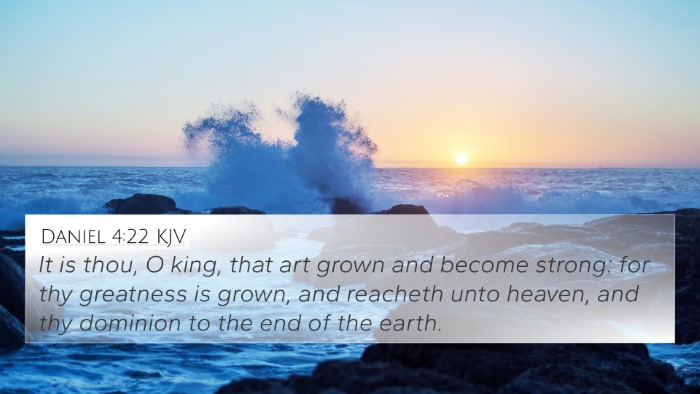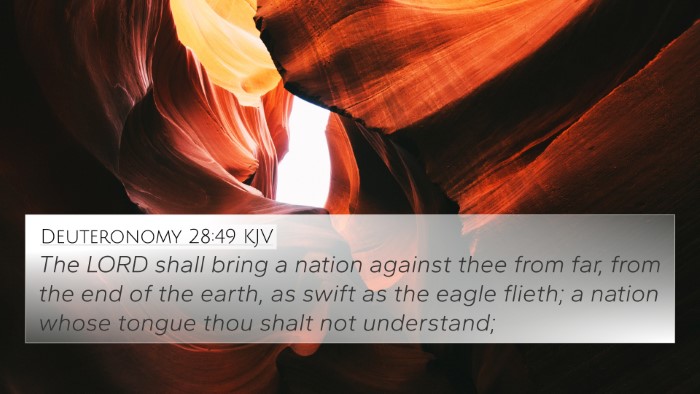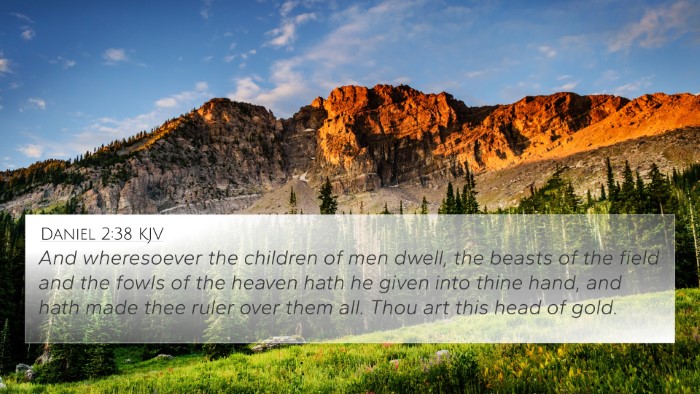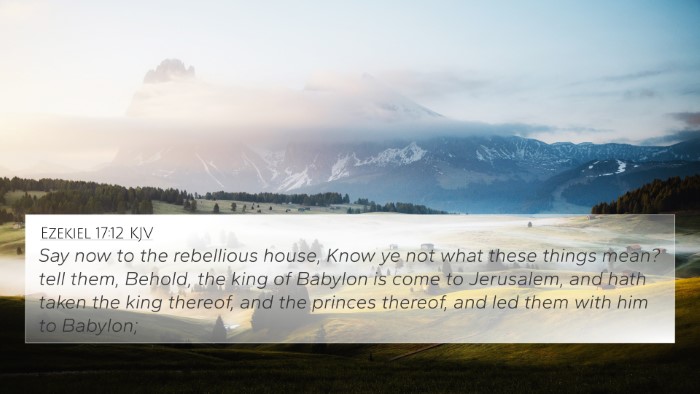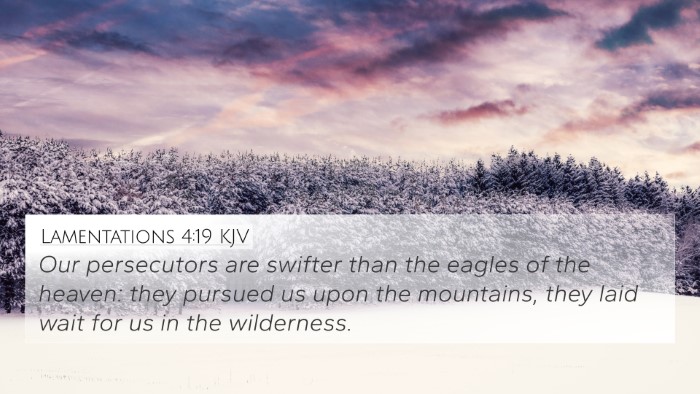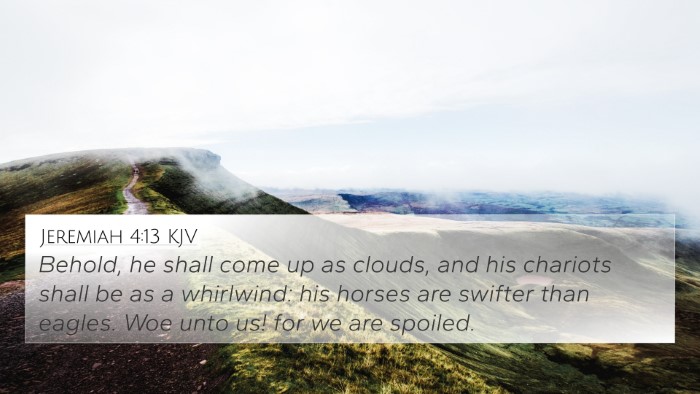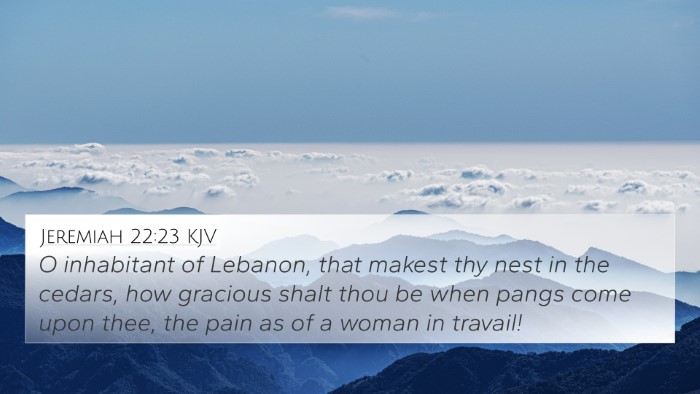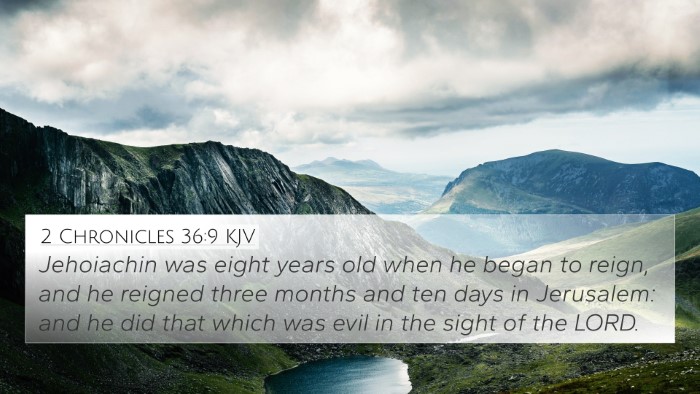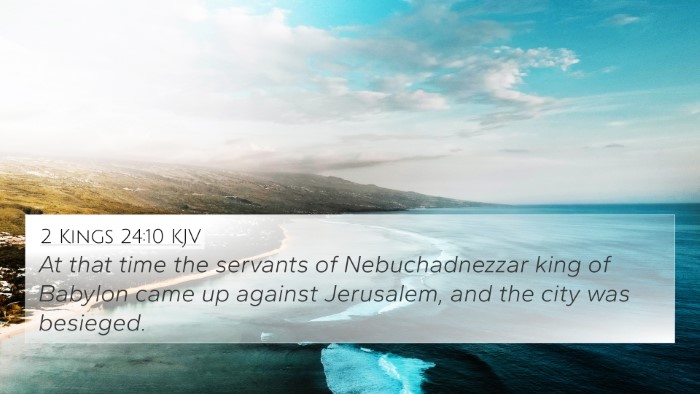Ezekiel 17:3 - Summary and Interpretation
Ezekiel 17:3 states, "And say, Thus saith the Lord God; A great eagle with great wings, longwinged, full of feathers, which had divers colours, came unto Lebanon, and took the highest branch of the cedar."
Context and Background
This verse is part of Ezekiel's parabolic message, where God uses imagery to convey deeper spiritual truths about Israel's fate and relationships with surrounding powers. Specifically, the eagle symbolizes great power, which in this context represents Babylon, while the cedar tree illustrates the nation of Israel. Ezekiel employs this imagery to express God's sovereignty and dealings with His people.
Interpretative Insights
- Matthew Henry: Henry explains that the eagle represents a swift and powerful nation that has come to exercise authority over Israel. It emphasizes God's control over earthly kingdoms and how He can use them for His purpose.
- Albert Barnes: Barnes adds that the mention of "the highest branch of the cedar" refers to the leadership of Israel, highlighting God’s intention to deal with the nation’s authorities. He interprets this as an illustration of how God removes what is high and mighty to show His sovereignty.
- Adam Clarke: Clarke notes the eagle’s various colors signify the diversity of the powers aligned against Israel, demonstrating that different nations will have a role in God's judgment and eventual restoration of His people.
Thematic Connections
This verse not only illustrates Israel's subjection but also carries broader themes of divine sovereignty, judgment, and restoration. Below, we explore connections and parallels with other scriptures:
Bible Verse Cross-References
- Ezekiel 17:12-14: Further extends the eagle metaphor, explaining the political and social ramifications in Israel.
- Isaiah 10:5-6: Discusses the Assyrian empire as an instrument of judgment, paralleling the role of Babylon as described in Ezekiel.
- Lamentations 1:1: Illustrates Israel's desolation, highlighting the consequences of their disobedience and the judgment that follows.
- Daniel 4:23-25: Speaks of God’s dominion over kingdoms, reinforcing the theme of divine sovereignty over earthly powers.
- Jeremiah 22:23: Referring to the king of Judah as a cedar in Lebanon, echoing the imagery found in Ezekiel 17.
- Matthew 24:21: Jesus speaks of great tribulation, linking the hardships faced by Israel with prophetic implications of future judgments.
- Romans 11:20-22: Discusses the idea of Israel’s fall and the grafting in of the Gentiles, reinforcing themes of divine justice and mercy.
- Revelation 18:4: Warns of judgment upon those who oppose God, similar to how Israel faced judgment for its disobedience.
- Psalm 1:3: Uses the tree metaphor to indicate prosperity and stability for those who follow God’s ways, contrasting Israel's situation.
- Proverbs 18:10: "The name of the Lord is a strong tower," illustrating how reliance on God protects against outside powers, linking back to Israel’s need to trust in divine sovereignty rather than worldly influence.
Comparative Bible Verse Analysis
Understanding Ezekiel 17:3 requires recognizing its place within the broader narrative of prophecy and judgment throughout the Scriptures. The connections highlighted above provide a more comprehensive understanding of both thematic elements and the unfolding revelation of God’s plan for Israel and the nations.
Tools for Bible Cross-Referencing
To explore the connections between Bible verses, readers can utilize various tools and methods:
- Consult a Bible concordance that lists key terms and their locations throughout Scripture.
- Utilize a Bible cross-reference guide to find related passages and enhance research.
- Engage in cross-reference Bible study to systematically compare themes and teachings.
- Explore Bible chain references for a structured approach to finding connections.
- Leverage online resources and comprehensive Bible cross-reference materials for deeper study.
How to Use Bible Cross-References
Using cross-references effectively involves:
- Identifying key themes in a verse and tracing them through Scripture.
- Examining context in both the Old and New Testaments to gain a rounded view of the topic at hand.
- Analyzing similar verses for recurring messages or warnings, especially in prophetic writings.
Conclusion
Ezekiel 17:3 offers a profound look into the interplay of divine authority and human action. Through examining related scriptures and utilizing cross-referencing tools, individuals can deepen their understanding of prophetic literature and its implications for both ancient Israel and contemporary faith practices.

